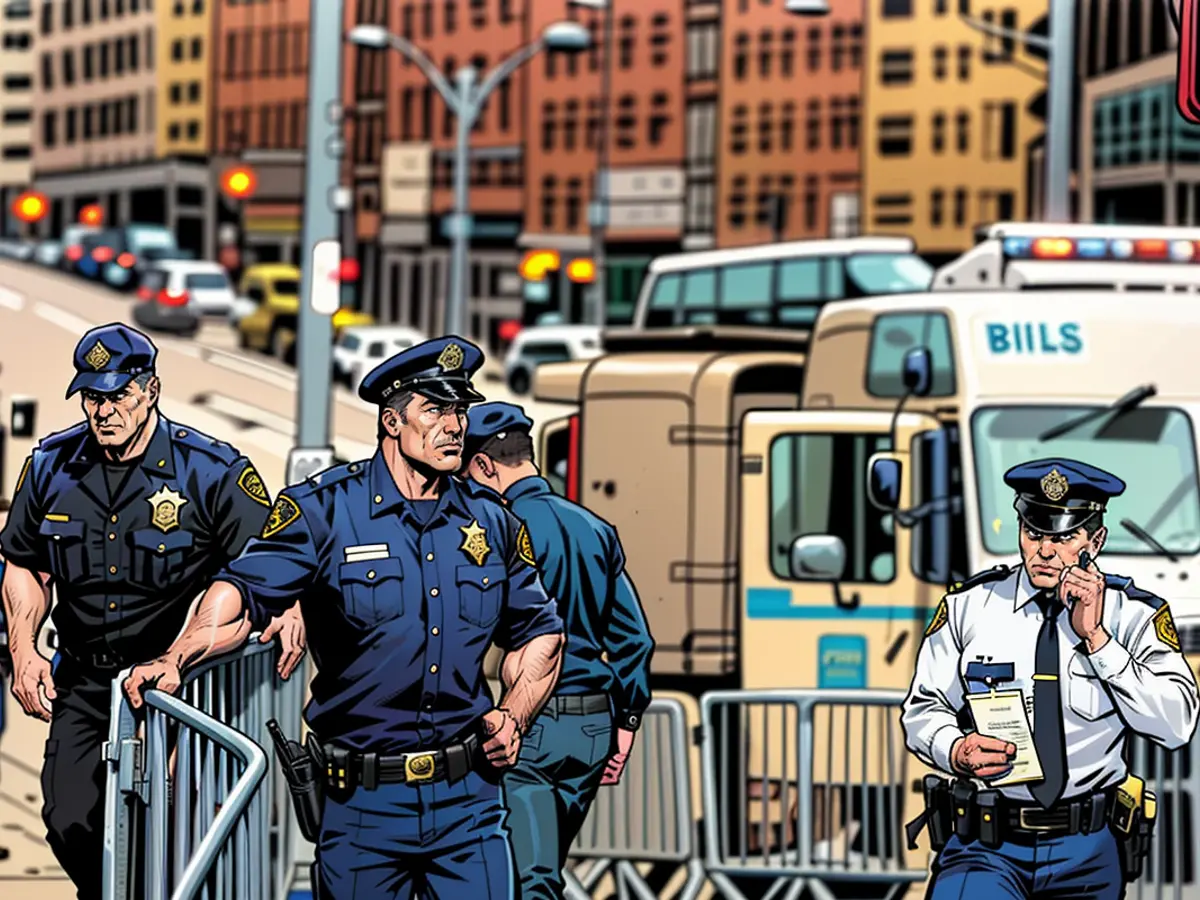Within the vast landscape of significant U.S. interventions: Safeguarding multiple global heads of state
As international representatives convened for speeches and covert chatter this week, CNN and a select group of media were granted entry to two high-level safety areas on UN property. Navigating through a maze of unremarkable passages nested at the UN's contemporary headquarters, they found themselves in front of two rooms lined with an enormous array of monitors.
What leaves one astonished is the sight of numerous screens, revealing that cameras are literally everywhere - some subtly camouflaged, scattered across the UN's vast property, surveilling entrances, the garage, corridors, and driveways. In total, there are an astonishing 1400 cameras in use, as UN authorities confirmed.
Constantly updated records from cameras filming nearby areas outside the UN are always recording. Despite the obvious challenge of handling so many cameras, UN security personnel are constantly reviewing footage, ensuring vigilance.
Should a guest, or perhaps a villainous figure, face difficulties gaining entry in the complex, an alarm within the safety centers will be activated, announcing "Rejected! Rejected! Rejected!" via an automated voice.
Be mindful to adjust your tie while strolling the UN grounds.
This is an all-hands-on-deck operation involving the UN, New York Police Department, Secret Service, and diplomatic security. Their responsibilities are vast - over 22,000 delegates were accounted for during this year's UNGA attendee count.
Given the annual recurrence of this event, security teams maintain a record of past occurrences. They observe subtle improvements and lessons each year, they mentioned.
In the words of US Ambassador Linda Thomas-Greenfield, "Knock on wood; we have never experienced a security crisis involving heads of state here. We have taken every precaution."
The NYPD and diplomatic security are tasked with handling transportation necessities, be it lengthy or abbreviated motorcades, from hotels stationed across Manhattan to the UN and back. As a result, traffic delays are inevitable. In this year's edition, many world leaders have chosen to host events all over the city, ranging from celebrating the New York Stock Exchange to meeting with their U.S.-based constituencies.
Perhaps due to the United Nations' growing contention and serving as a stage for heated exchanges between diplomats, coping with unwanted attention and safety hazards has become an integral responsibility for the staff.
A year prior, on New Year's Day, an individual suffering from a mental health episode led her vehicle to the UN's main car entrance and refused to depart. In 2002, a postal worker leaped the perimeter boundary, tossed pamphlets in the air, and aimed gunshots at the majestic Secretariat building, striking multiple floors. (Barriers have since been raised higher.)
UN security personnel highlight their primary mandate as ensuring a secure environment. Thus far, their operations have been successful.
The Americas, along with other parts of the world, are represented at these high-level safety areas during the UNGA. The extensive surveillance network, comprising over 1400 cameras, covers the UN's property in the Americas and beyond, ensuring security for delegates from the Americas and beyond.







